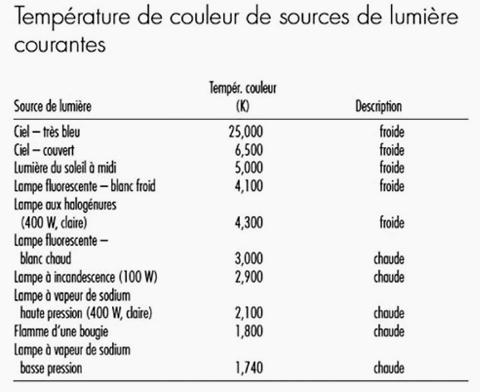Lighting and Colour

Light bulbs give a visible perceived colour or colour appearance. It is the colour of the light reflected from the surface.
Different measures exist to evaluate a light source colour.
1) Chromaticity or Colour Temperature , is measured in Kelvin (K). In general, light source with low colour temperature (under 3000 K) have a reddish or yellowish colour, described as warm colour. Light source with high colour temperature (above 4000 K) have a bluish colour, described as cool colour. Higher is the colour temperature, "cooler" is the light colour and closer it is to the daylight. On a contrary, lower is the color temperature, "warmer" is the light colour.
2) Colour Rendering Index (CRI) is a general expression for the effect of a light source on the colour appearance of objects compared with the effect produced by a reference or standard light source of the same correlated colour temperature. The CRI has a value between 0 and 100. A CRI of 100 indicates a light source, which renders colours as well as the reference source. The CRI is used to compare light sources of the same chromaticity (or colour temperature). A higher CRI means a better colour rendering.
Information from Natural Resources Canada - Lighting Reference Guide



